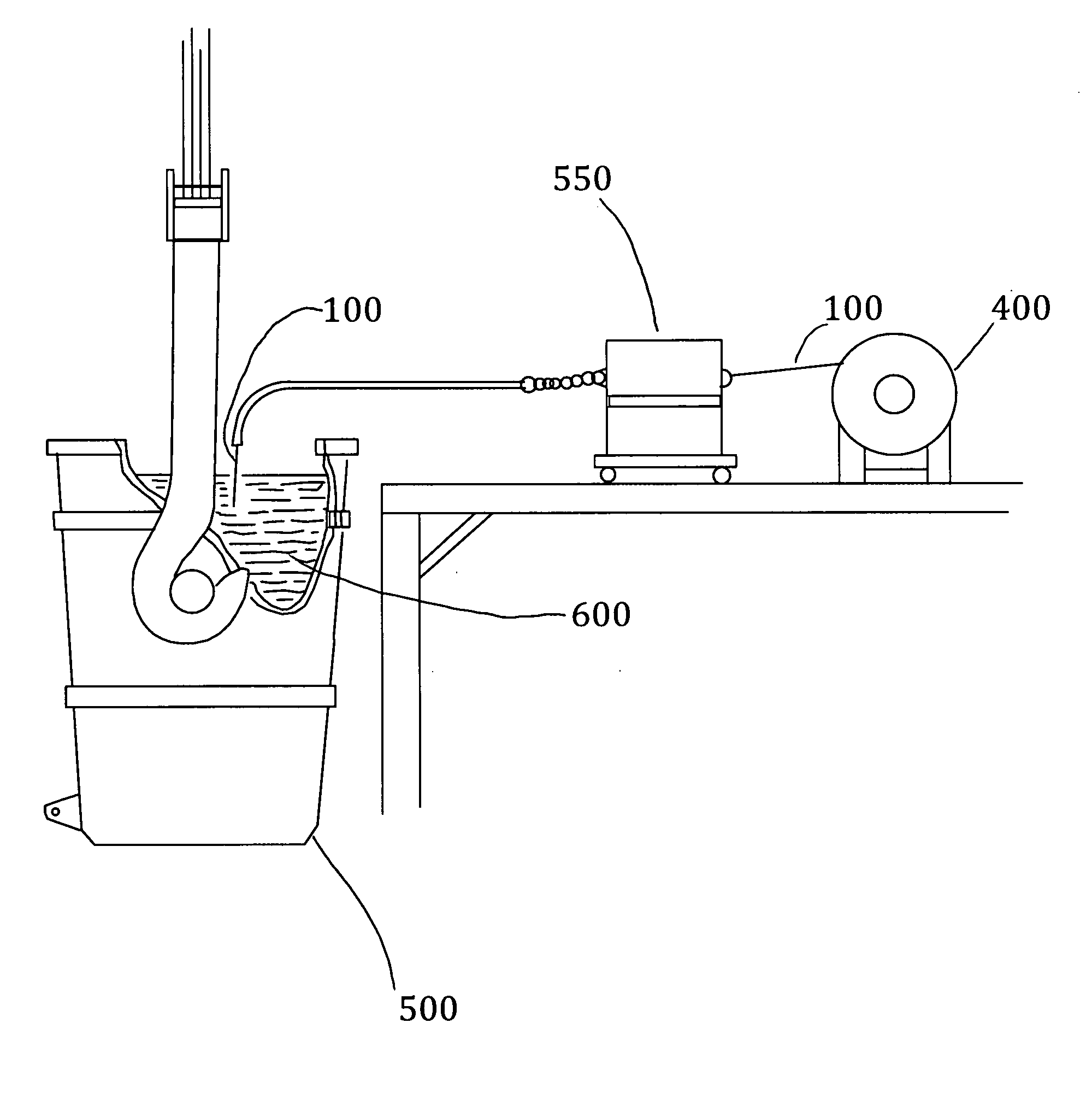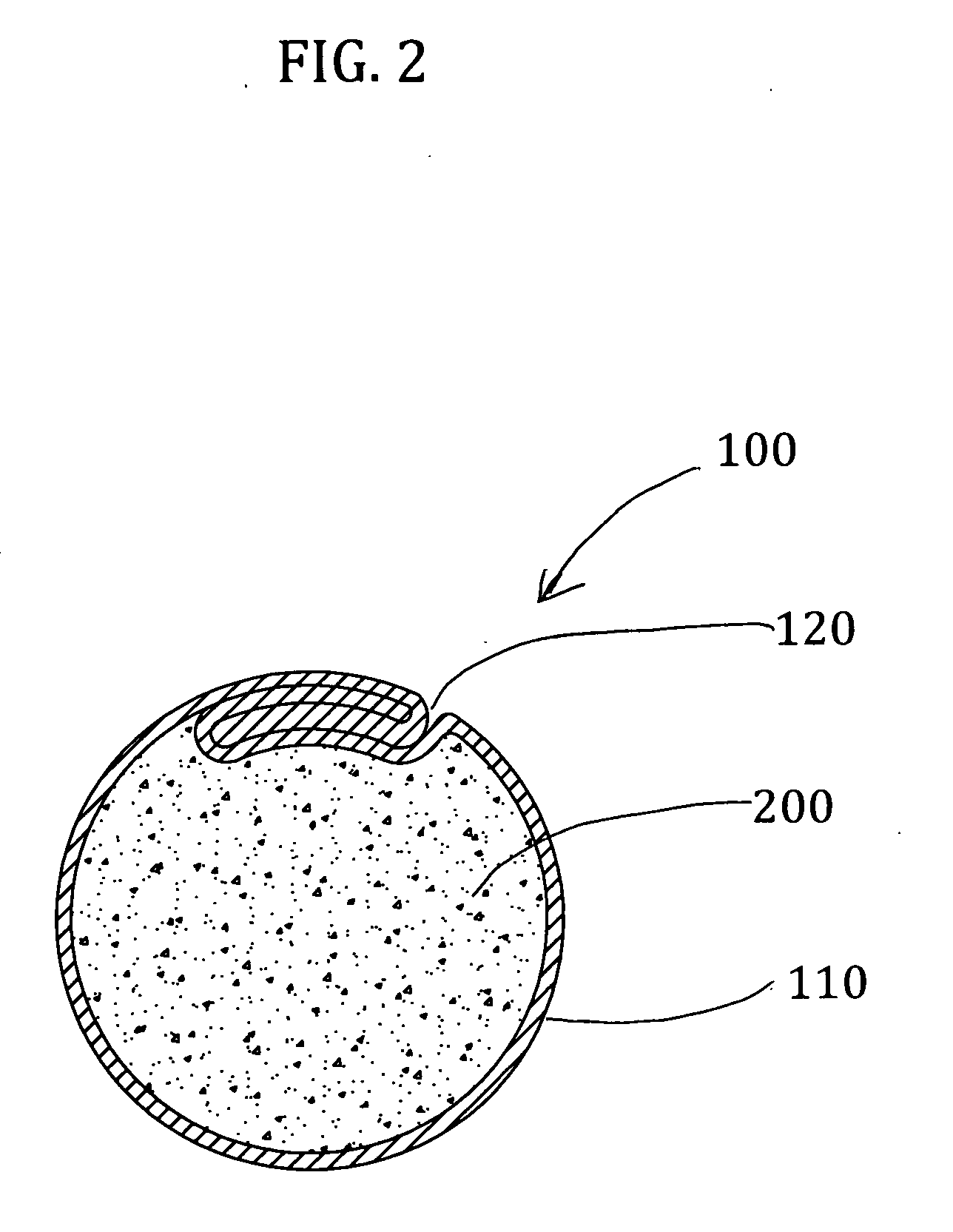Composition and process for improved efficiency in steel making
- Summary
- Abstract
- Description
- Claims
- Application Information
AI Technical Summary
Benefits of technology
Problems solved by technology
Method used
Image
Examples
Embodiment Construction
[0048]FIG. 1 shows the cored wire (100) consists of a filling (200) made of a particular material and a metal jacket (110) made out of steel. The metal jacket (110) is usually made from a soft mild carbon steel ranging from 0.4 to 0.5 mm thick. The metal jacket (110) provides the following functions:[0049]1. Contains the filling (200);[0050]2. Keeps the filling dry (200);[0051]3. Prevents the filling (200) from reacting in the liquid slag layer on top of the ladle; and[0052]4. Provides rigidity for the filling (200) to penetrate into the molten steel.
[0053]The cored wire (100) is normally would into a coil (400) and place on a reel. The metal jacket (110) starts as a flat ribbon and is formed into the cylinder that holds the filling (200). The flat ribbon like material is bent into a cylinder with the seam (120) holding the filling (200) in place inside the cored wire (100).
[0054]FIG. 2 shows the cored wire (100) with the seam (120) bent flush with along the circumference of the cor...
PUM
| Property | Measurement | Unit |
|---|---|---|
| Weight | aaaaa | aaaaa |
| Weight | aaaaa | aaaaa |
| Fraction | aaaaa | aaaaa |
Abstract
Description
Claims
Application Information
 Login to View More
Login to View More - R&D
- Intellectual Property
- Life Sciences
- Materials
- Tech Scout
- Unparalleled Data Quality
- Higher Quality Content
- 60% Fewer Hallucinations
Browse by: Latest US Patents, China's latest patents, Technical Efficacy Thesaurus, Application Domain, Technology Topic, Popular Technical Reports.
© 2025 PatSnap. All rights reserved.Legal|Privacy policy|Modern Slavery Act Transparency Statement|Sitemap|About US| Contact US: help@patsnap.com



